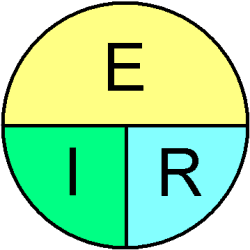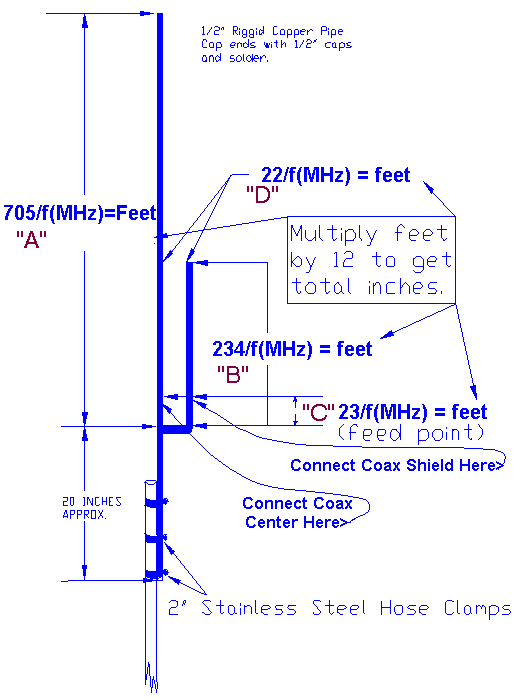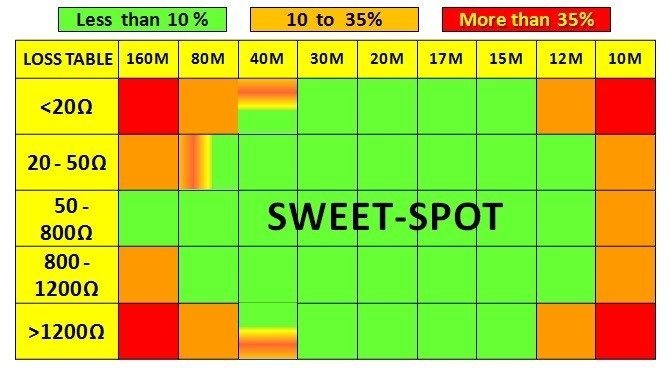Ohm’s Law
| |
Alessandro Volta was a physicist born in Italy in 1745. He became known in 1800 as the inventor of the first electric battery. This achievement paved the way for a German physicist by the name of Georg Simon Ohm to discover what is now known as Ohm’s Law. His discovery was made in 1827.
Ohm�s Law is a set of formulas used in electronics to calculate an unknown amount of current, voltage or resistance. These formulas are the basic building blocks of electrical and electronic theory, and will be the foundation of much of your work in amateur radio.
Ohms Law is used to calculate a missing value in a circuit. Using the figure below you can easily remember the 3 basic formulas for Ohm’s Law. The values in the formulas are as follows:
E=Voltage(Volts); I=Current(Amps); R=Resistance(Ohms)
Just cover the value you need to find, then multiply or divide the others as the figure shows.
E = I * R (volts = amps * ohms)
I = E / R (amps = volts / ohms)
R = E / I (ohms – volts / amps)
|
 |
Ohm’s Law Calculator
Below is a simple calculator using Ohm’s Law. Simply enter two of the three values; Voltage (in Volts), Resistance (in Ohms), or Current (in Amperes). Then click the appropriate button at the bottom to compute the missing value. Click the “Clear All Values” button to clear all values and start over. |

HAVE FUN
DESIGN YOUR OWN J POLE
FOR ANY BAND!
Design your J Pole for HF, 2 meters, 220, 440 and up!

|
|
J-Pole Antenna Design
SAVE TIME BY USING THE CALCULATOR BELOW.
|
On most of the J Pole designs out there, a choke should be used as close to the feed point of the antenna as possible to help prevent rf on the feedline and creating difficulty with SWR readings. For 2 meters, the coil is 4 turns of coax at 5 inches in diameter. You should get good results with the choke within 3 or 4 inches of the feed point on 2 meters.
Hint:
Use the last part of your feedline as the choke before attaching to the feed point!
Hints from builders:
"I have built my j-poles out of 10ft sticks of 1/2" emt conduit. Drill a 1/4" hole at the place where the "J" goes. Make the "j" out of 1/4" soft copper, Solder it in place thru the hole and add the cable. Cost about $6 using new parts.
If you need a "super" j, use a piece of 3/4" pvc as the insulator and add the stub and another 38 or so inches of conduit. still really cheap"
Dave, WB5HDS
THE "PERFECT" ANTENNA MATCHBOX
( ONLY AVAILABLE IN HAM HEAVEN )
 .......................... Joe HAM ........................
.......................... Joe HAM ........................
Most People Expect Too Much from their Antenna Matchbox . . .
EVERY MATCHBOX HAS A "SWEET-SPOT"
(...but no Matchbox can do everything.)
DEFINITION of MATCHBOX "SWEET-SPOT" - The "Sweet-Spot" of a matchbox is the range in Frequency and Impedance where the INTERNAL LOSS of the matchbox when tuned for a good match to the 50 Ohm transmitter, is LESS THAN 10%.
Matchboxes can also find a "good looking match" outside of their Sweet-Spot. In fact they can usually obtain a good looking match to impedances quite a ways outside of their Sweet-Spot. The only problem is, when working outside of their Sweet-Spot, the matchbox internal losses go up. Sometimes WAY UP.
Often internal losses in a matchbox can reach 50% or even higher!
Pictured below is a Loss-Table of a TYPICAL MATCHBOX.
The green area represents its Sweet-Spot, where internal losses are less than 10%. The orange area is where the internal losses are between 10% and 35%. The red area is where the internal losses are greater than 35%.
 . . . . . ( In reality, most matchboxes are WORSE than this. )
. . . . . ( In reality, most matchboxes are WORSE than this. )
THE REASONS:
- Many people consider the term "Matchbox" (or "Antenna Tuner") as a specific term and believe that all things called that must be more or less the same. NOT!
- In reality, the term "Matchbox" is like the word "Car". It can mean just as many different things as "car" means.
- A Porsche and a Corvette are both great cars.
- A Mercedes "S-Class" and a Lincoln Continental are both great cars.
- Nobody expects the Continental to be able to do the same things as the Corvette, nor do we expect the Porsche to be able to do the same things as the Mercedes.
- Yet many people seem to think all matchboxes should be able to do everything! How Silly!
- Most people don't know or don't stop and think about how different the task of matching a 160m antenna is to the task of matching a 10m antenna.
- Component values for 160m may be has high as a few thousand pF and 50 uH
- Component values for 10m may be as low as 10pF and 1 uH
- It is virtually impossible to build one single matchbox that can meet both of those requirements efficiently.
- Most people don't know or don't stop and think about how different the impedance of different antennas might be.
- Some antennas such as a short 160m vertical might have an impedance as low as 10 Ohms or even less.
- Yet when trying to load an 80m dipole fed with open wire on 40m, the impedance might be as high as 2K or 3K Ohms.
- It is virtually impossible to build one single matchbox that can EFFICIENTLY match such a broad impedance range.
- When Joe Ham buys a matchbox and finds it won't match his favorite antenna, the first thing he does is blame the matchbox. He never once considers that he may have bought the wrong size shoes and that's why his feet hurt.
If Joe Ham really wants to match everything efficiently,
it may be that Joe needs to buy
two or three different kinds of matchboxes!
ALL GENERAL PURPOSE MATCHBOXES LOOK SIMILAR TO THE CHART ABOVE.
- Some are better on the higher bands, some are better on the lower bands.
- Some are better at lower impedances, some are better at higher impedances.
- NO MATCHBOX IS GOOD AT ALL OF THESE.
THE SWEET-SPOT IS DIFFERENT FROM ONE MATCHBOX TO ANOTHER.
It is wrong to say a matchbox is bad, just because it won't match "your" antenna. That matchbox was probably designed to match something else. You didn't buy a bad matchbox . . .
. . . YOU BOUGHT THE WRONG MATCHBOX !
If a Soccer Mom can't take her 4 boys to the soccer match because they won't fit in her Corvette Stingray, does that make the Corvette a bad car? (It's not the car's fault!)
THE TRICK:
The Trick is to find a matchbox whose Sweet-Spot matches the impedance
of the antenna you wish to match, on the bands you wish to use it on.
IF YOU DO THIS RIGHT, THEN YOU HAVE FOUND THE PERFECT MATCHBOX!
(...but it's only perfect for YOU; maybe not for the next guy...)
In this section of my web site, I will try to help you understand what is important for finding the perfect matchbox for your own personal antenna matchbox requirements.
We will use the ARRL's Antenna Tuner test results, which they have published in QST over the years. There is no need to guess at this, or to take chances with a matchbox. Most of the information is available from the ARRL. You only have to read it and use it for your purchase decisions.
From Rich KF9F
HERE ARE A COUPLE OF GREAT LINKS.
INFO ON TUNERS FROM RICK DJ0IP ANTENNA TUNERS
http://www.dj0ip.de/antenna-matchboxes/symmetric-asymmetric
COMMON MODE CHOKE #1
http://www.karinya.net/g3txq/chokes/
COMMON MODE CHOKE INFO #2 FROM K9YC
http://audiosystemsgroup.com/NCDXACoaxChokesPPT.pdf

[email protected]
Copyright LCRC © 2012, 2016
Last revised: 15 February 2016


 .......................... Joe HAM ........................
.......................... Joe HAM ........................  . . . . . ( In reality, most matchboxes are WORSE than this. )
. . . . . ( In reality, most matchboxes are WORSE than this. )